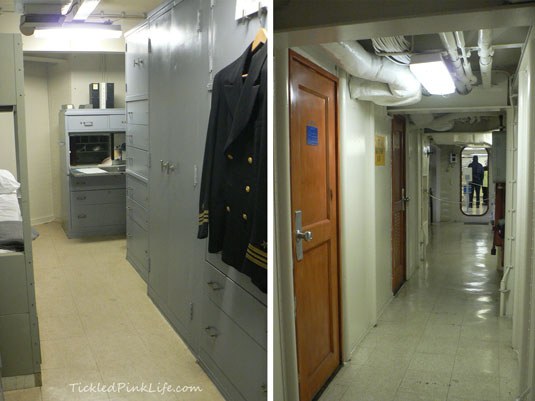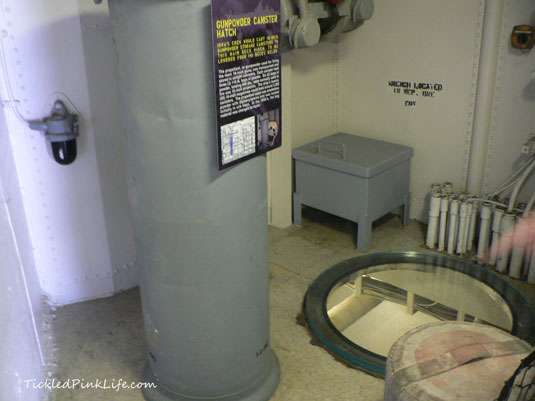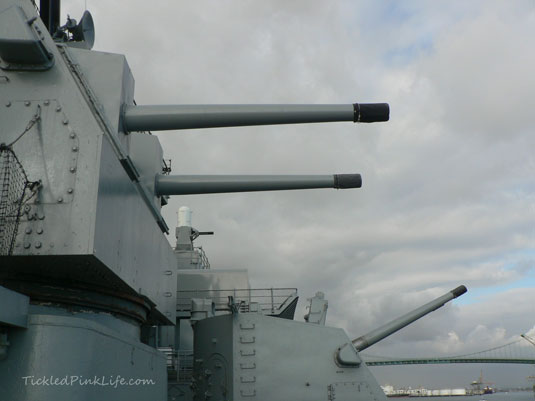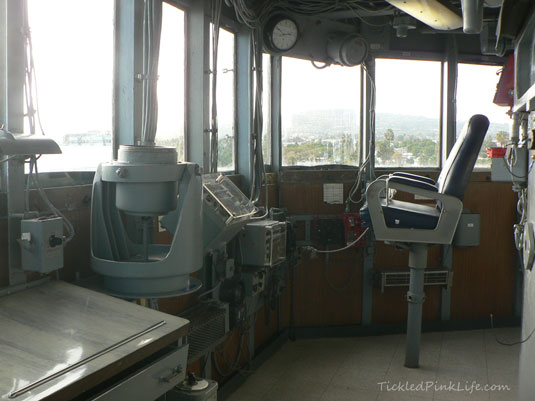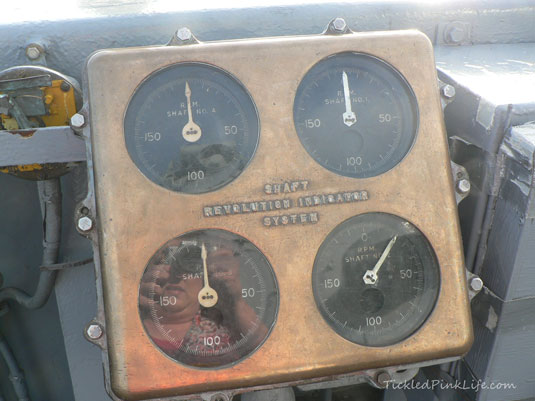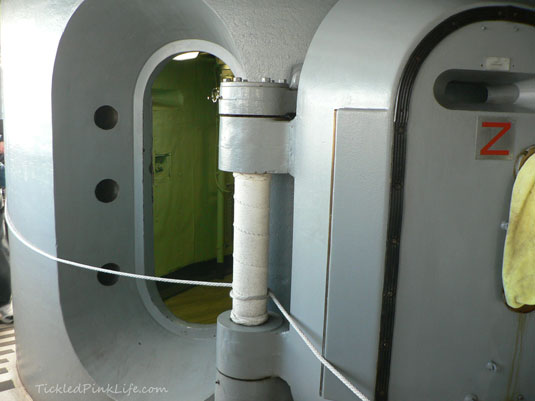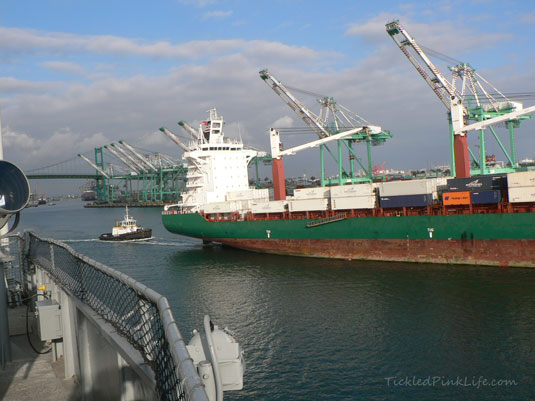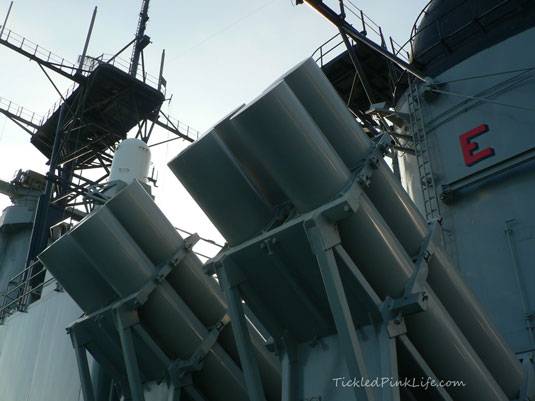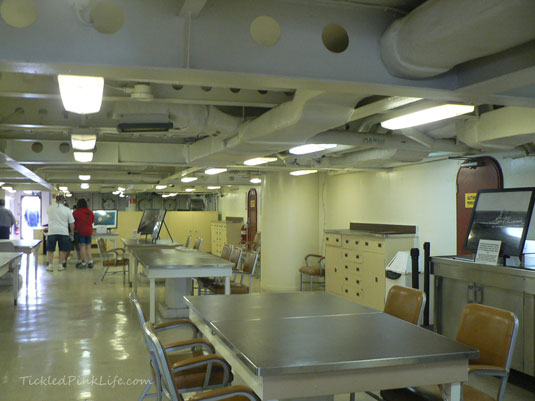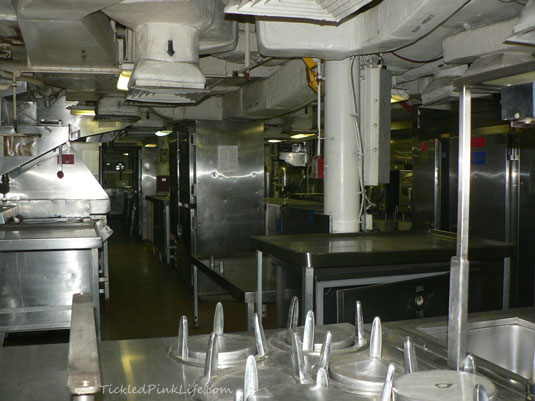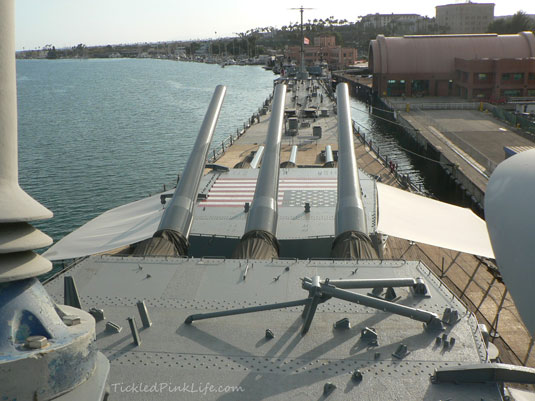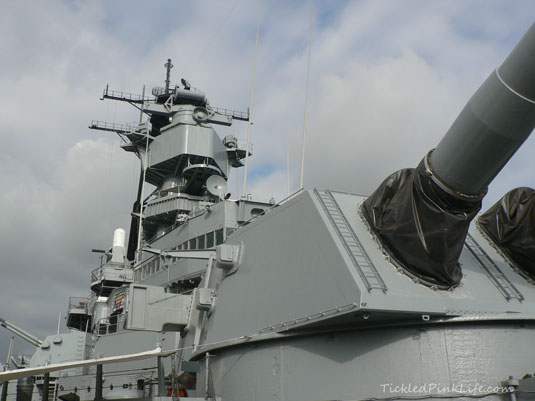 Over the holidays, I had the pleasure of touring the USS Iowa berthed in San Pedro, CA. Built in 1940 at the Navy Yard in New York, the battleship served in World War II, the Korean War and also through the Cold War. The Iowa was launched in August of 1942, and commissioned in February 1943. At a cost of more than $110,000,000, the Iowa class battleships were the fastest of their time with a top speed of 33 knots.
Over the holidays, I had the pleasure of touring the USS Iowa berthed in San Pedro, CA. Built in 1940 at the Navy Yard in New York, the battleship served in World War II, the Korean War and also through the Cold War. The Iowa was launched in August of 1942, and commissioned in February 1943. At a cost of more than $110,000,000, the Iowa class battleships were the fastest of their time with a top speed of 33 knots.
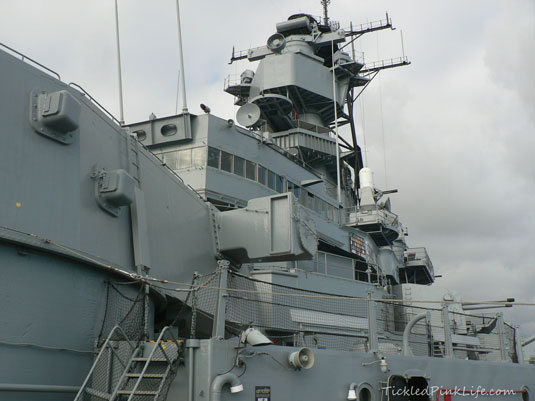 The Iowa is 887 feet long, and the hull width is 108 feet across. The ship is 209 feet tall from the bottom of the hull to the top of the mast.
The Iowa is 887 feet long, and the hull width is 108 feet across. The ship is 209 feet tall from the bottom of the hull to the top of the mast.
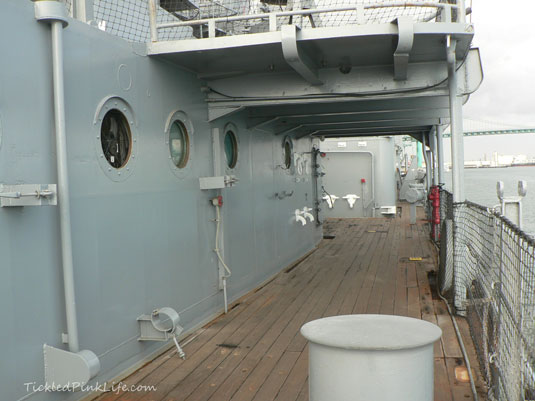 The deck was originally constructed with 54,000 square feet of teak wood planking, which was partially replaced with Douglas fir planking during the Cold War refurbishment.
The deck was originally constructed with 54,000 square feet of teak wood planking, which was partially replaced with Douglas fir planking during the Cold War refurbishment.
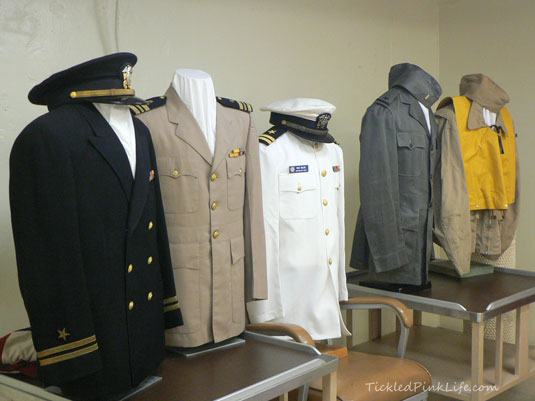 During World War II, the crew consisted of 134 officers and 2400 enlisted men, but by 1984-1990, the crew count was at 64 officers and 1501 enlisted.
During World War II, the crew consisted of 134 officers and 2400 enlisted men, but by 1984-1990, the crew count was at 64 officers and 1501 enlisted.
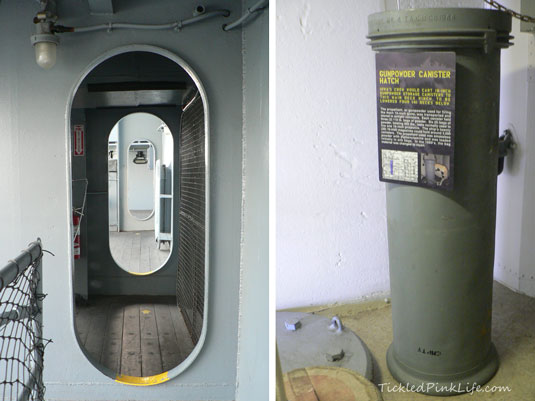 Prominent features of the battleship’s main deck are the 16-inch gun turrets. Six bags of gunpowder (about 660 pounds) were used to fire one 16-inch projectile. The gunpowder, originally placed in silk bags and then later on in rayon, was stored in air-tight canisters each holding three 110-pound bags.
Prominent features of the battleship’s main deck are the 16-inch gun turrets. Six bags of gunpowder (about 660 pounds) were used to fire one 16-inch projectile. The gunpowder, originally placed in silk bags and then later on in rayon, was stored in air-tight canisters each holding three 110-pound bags.
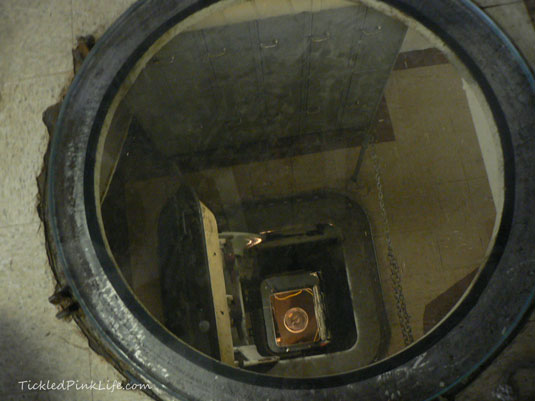 The canisters were transported to a main deck winch, where they were lowered four decks below. The ship’s twenty 16-inch magazines could hold about 3,000 canisters of gunpowder.
The canisters were transported to a main deck winch, where they were lowered four decks below. The ship’s twenty 16-inch magazines could hold about 3,000 canisters of gunpowder.
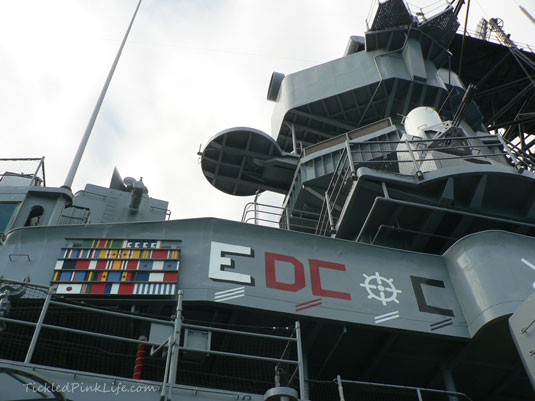 The Iowa served three commissions totaling 20 years of active duty and 50 years of Naval Reserve duty.
The Iowa served three commissions totaling 20 years of active duty and 50 years of Naval Reserve duty.
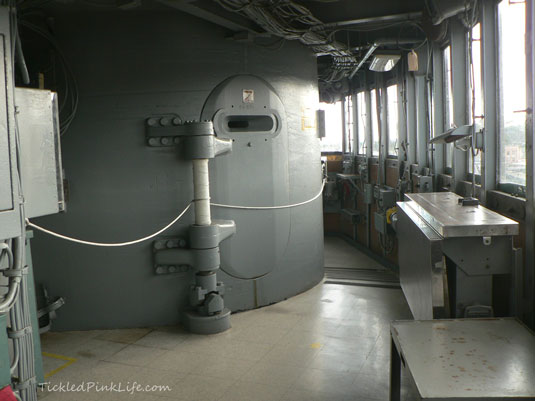 The 17-inch armored conning tower runs through the center of the bridge, and protects the helmsman and commanding officers when the ship is under attack.
The 17-inch armored conning tower runs through the center of the bridge, and protects the helmsman and commanding officers when the ship is under attack.
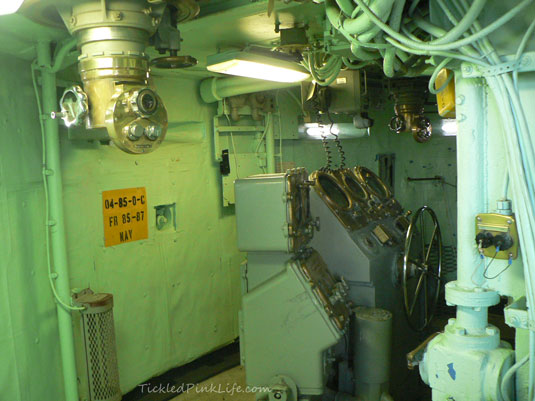 The Iowa commands a close view of the port of Los Angeles, Vincent Thomas Bridge, and various cargo ships as they head out to open sea.
The Iowa commands a close view of the port of Los Angeles, Vincent Thomas Bridge, and various cargo ships as they head out to open sea.
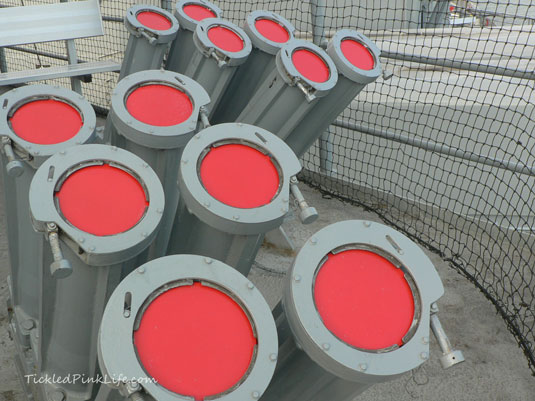 Among Iowa’s many weapon systems were the harpoon launchers. Each anti-ship missile carried a 488-pound warhead, propelled away from the ship by a booster engine, and then by a turbojet engine which would send the missile toward the target.
Among Iowa’s many weapon systems were the harpoon launchers. Each anti-ship missile carried a 488-pound warhead, propelled away from the ship by a booster engine, and then by a turbojet engine which would send the missile toward the target.
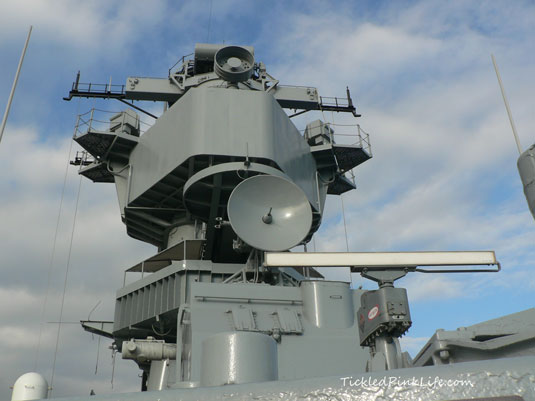 Officers could relax or dine in the Wardroom.
Officers could relax or dine in the Wardroom.
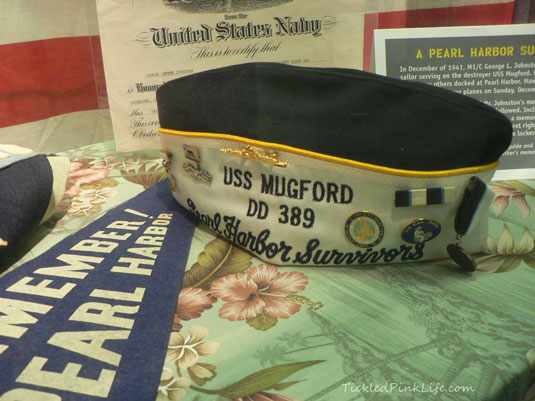 On September 2, 1945, the Iowa escorted her sister ship, the Missouri into Tokyo Bay for the Japanese surrender ceremony that ended World War II. Exhibits on the Iowa include mementos from Pearl Harbor.
On September 2, 1945, the Iowa escorted her sister ship, the Missouri into Tokyo Bay for the Japanese surrender ceremony that ended World War II. Exhibits on the Iowa include mementos from Pearl Harbor.
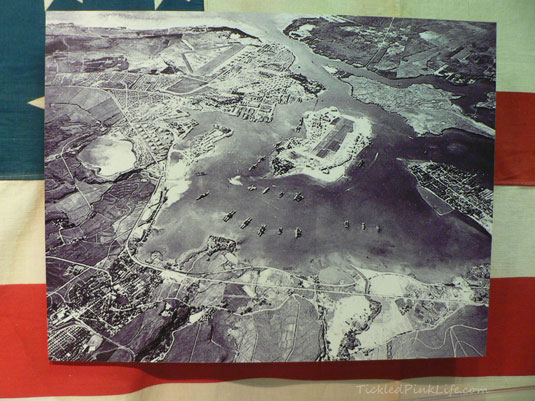 The Iowa was awarded to the non-profit group Pacific Battleship Center in September 2011, and opened to the public as a museum in July 2012. As refurbishment continues, additional areas of the ship are added to the tour. Currently guests can see the officers’ wardroom and cabins, crew quarters, kitchen, enlisted mess, gunpowder canister hatch, the Bridge, the armored conning tower, and weapon systems on the main and missile decks.
The Iowa was awarded to the non-profit group Pacific Battleship Center in September 2011, and opened to the public as a museum in July 2012. As refurbishment continues, additional areas of the ship are added to the tour. Currently guests can see the officers’ wardroom and cabins, crew quarters, kitchen, enlisted mess, gunpowder canister hatch, the Bridge, the armored conning tower, and weapon systems on the main and missile decks.
It should be noted that the tour route includes several staircases which are nearly vertical, so no walkers or strollers are allowed. The Iowa is not currently ADA accessible, but they are developing a wheelchair-accessible tour which will be available sometime in the future. Future tours will also include main guns, secondary weapons, missiles, engineering and armor. The Iowa is open daily, except holidays. Tour information can be found on their web site, pacificbattleship.com.
The USS Iowa is an adventure into history, an opportunity to marvel at weapons technology, and an honor to remember those who served aboard the battleship over her many years of service.
